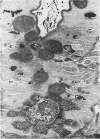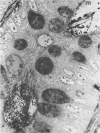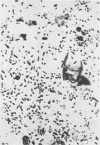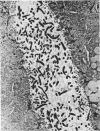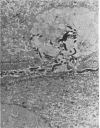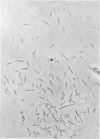Abstract
The large intestine of rats and dogs was examined by light and electron microscopy. In both species localization of bacteria in specific areas of the tissue was observed. Fusiform bacteria mixed with spirochaetes were seen at the opening of the crypts into the large bowel. However, at the base of the crypts homogeneous populations of spiral organisms were found; some crypts contained Borrelia-type spirochaetes, whereas others contained spiral bacteria with other morphology. Very few spiral bacteria, including those of the spirillum type, were seen in the lumen of the large intestine. Experiments in rats showed that mucosa-associated spiral organisms appeared in large numbers in the stools when diarrhea was induced with magnesium sulfate. These observations were taken as a basis for explaining intestinal spirochaetosis of dogs and other animals, a syndrome which has been frequently described and which, until now, has been considered to reflect pathogenicity of these organisms.
Full text
PDF
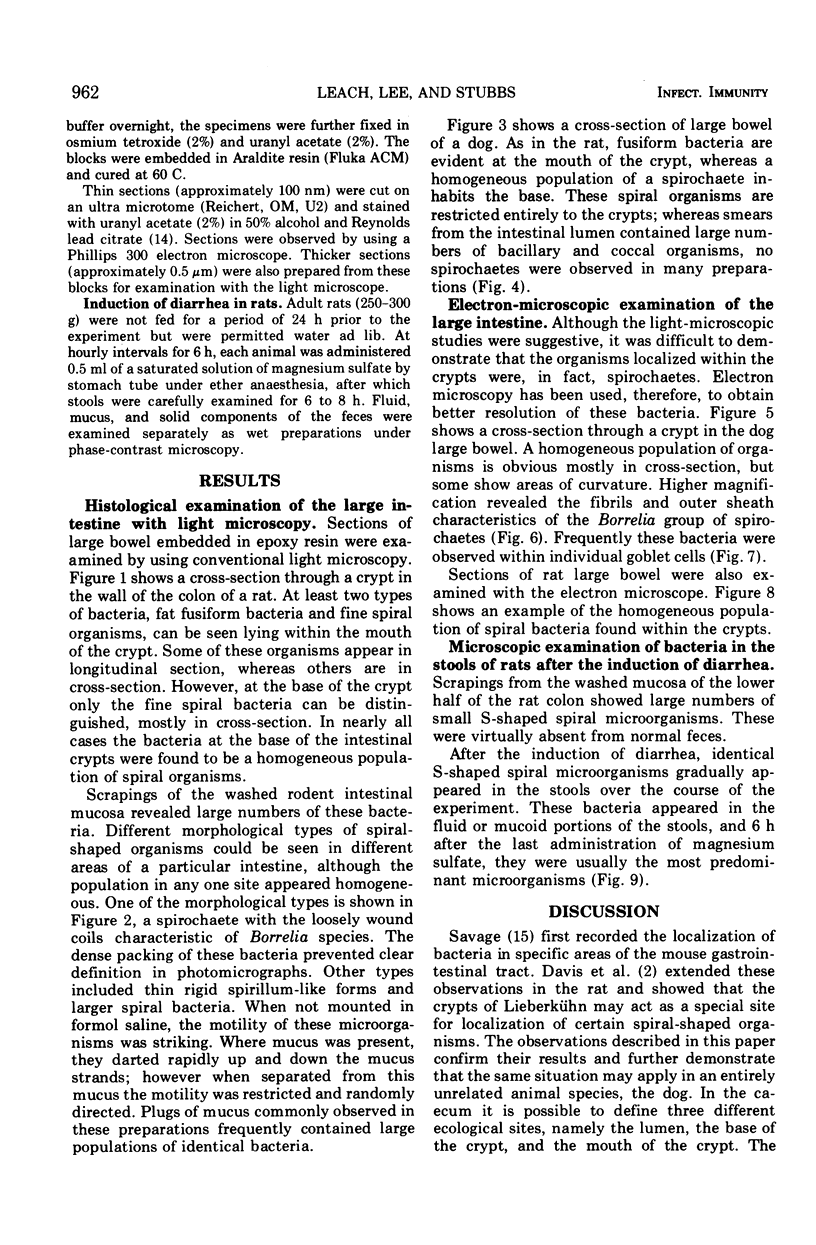
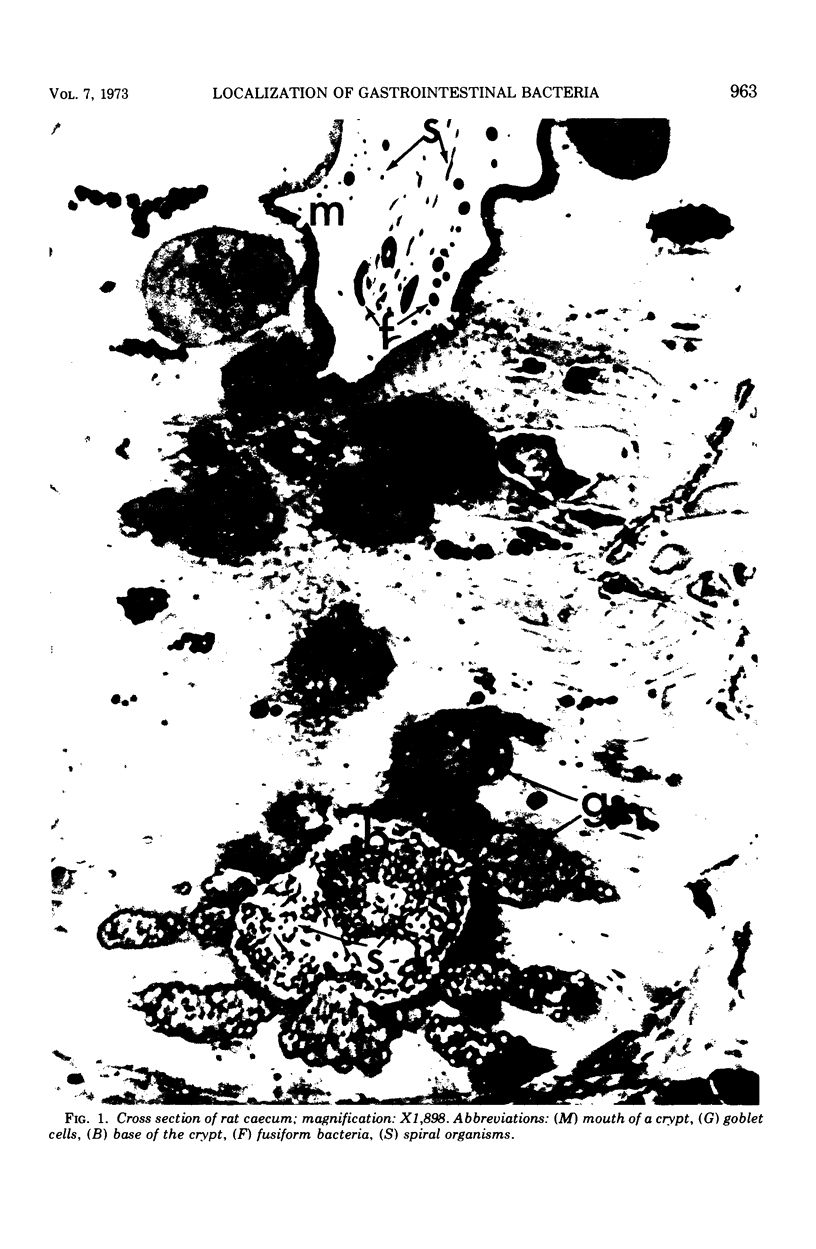
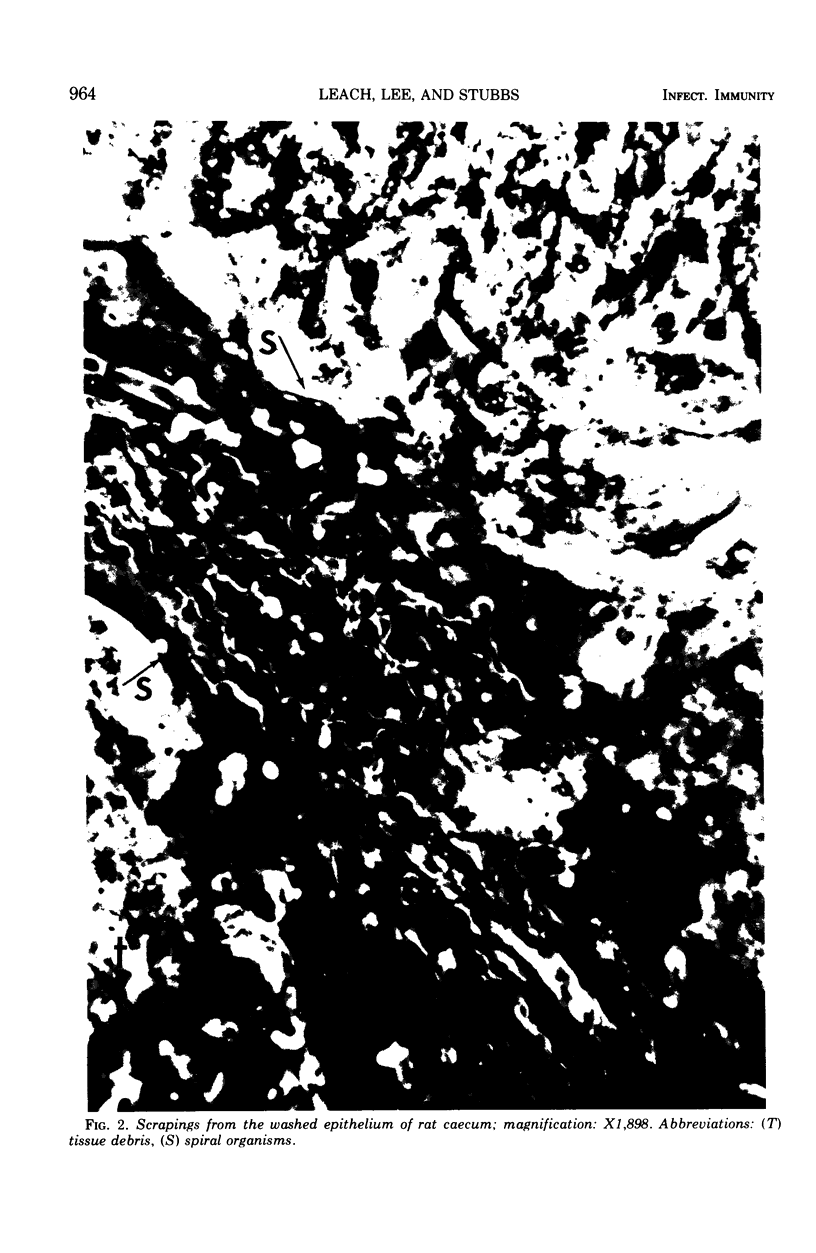

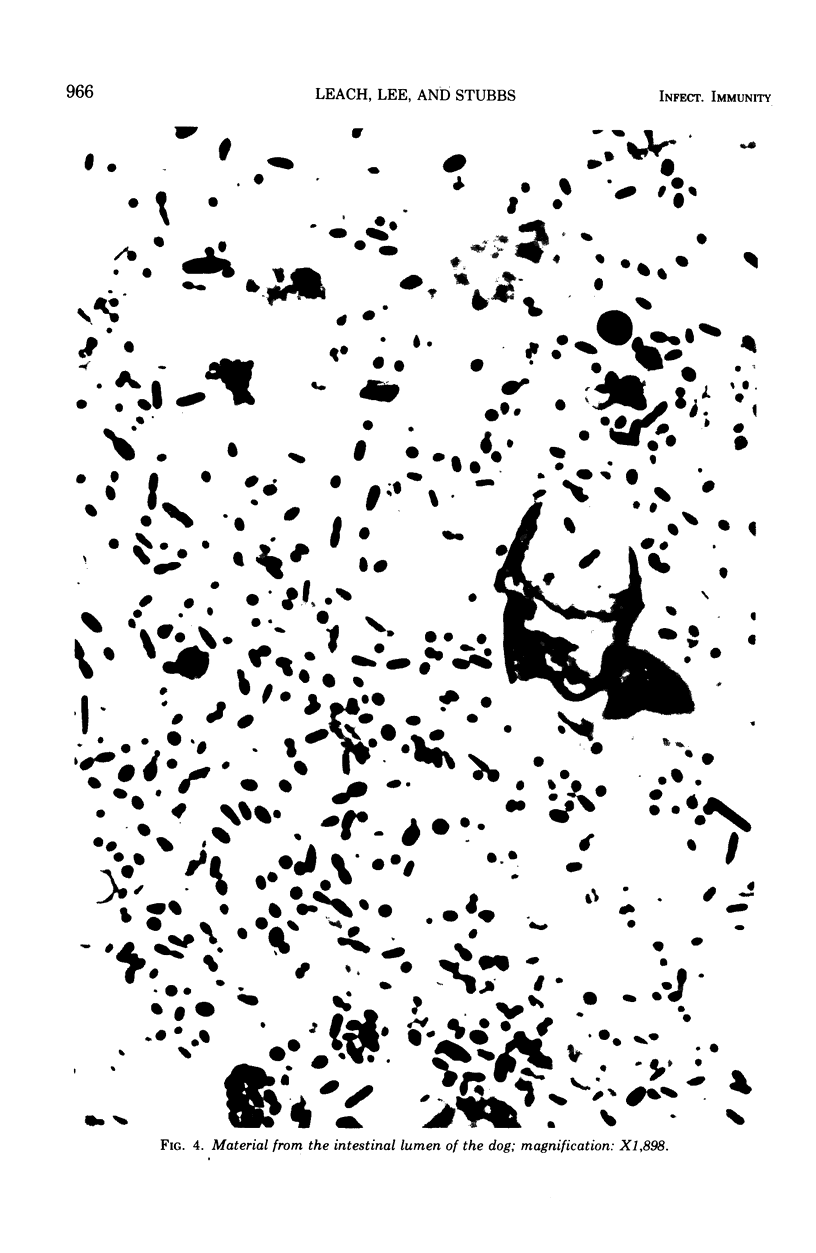
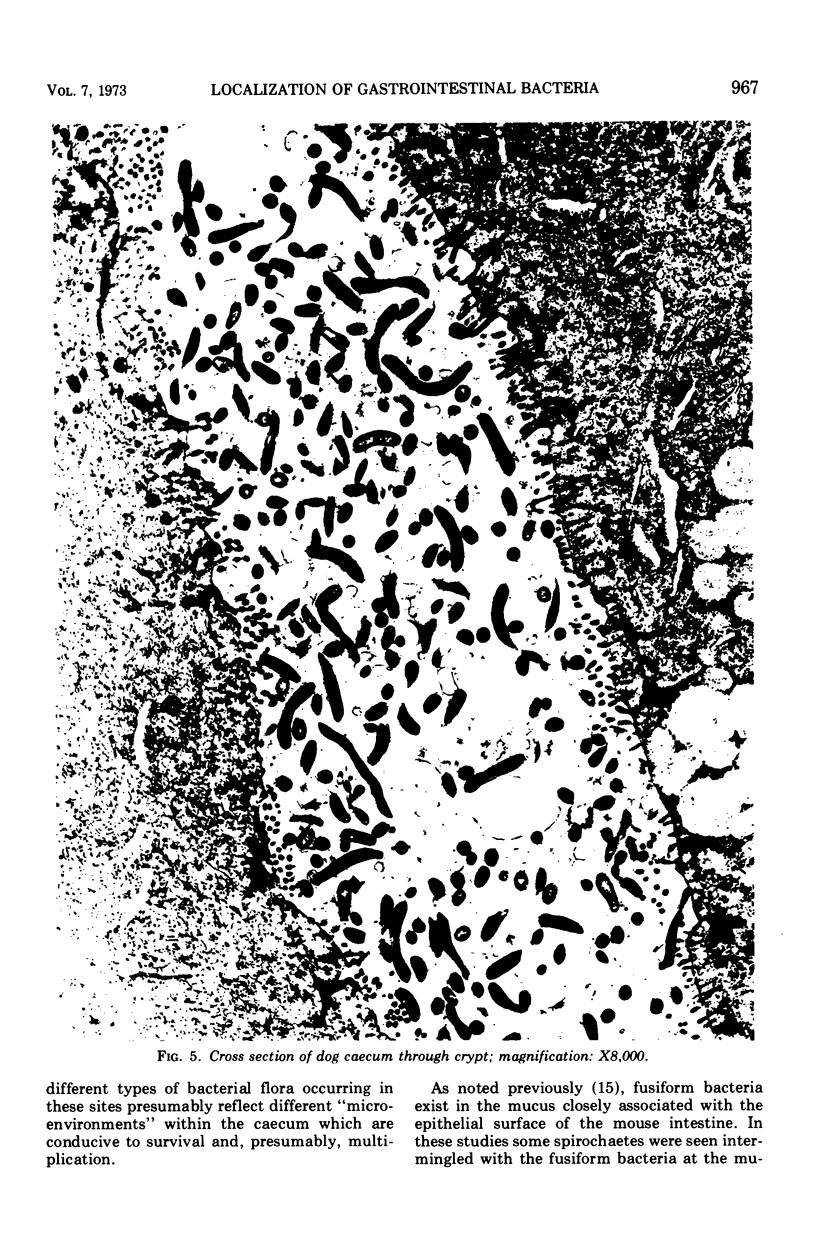


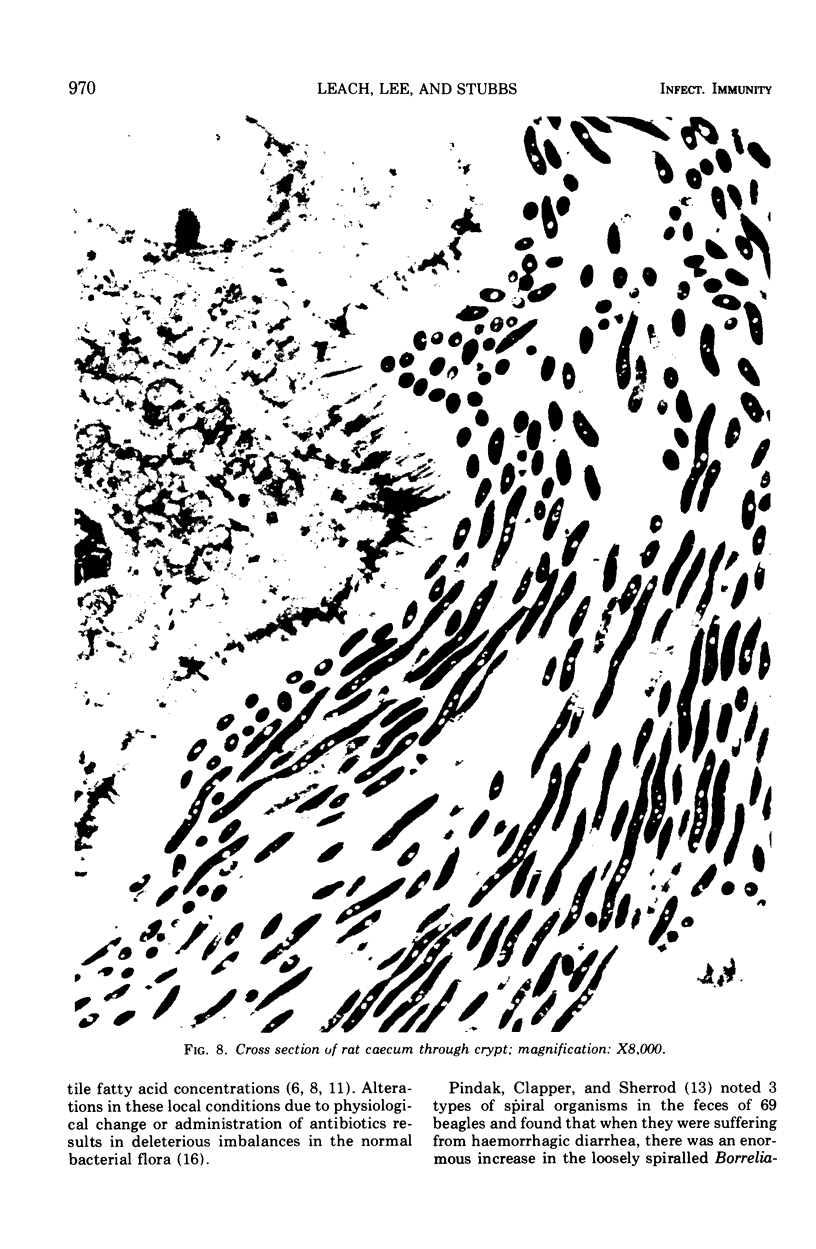
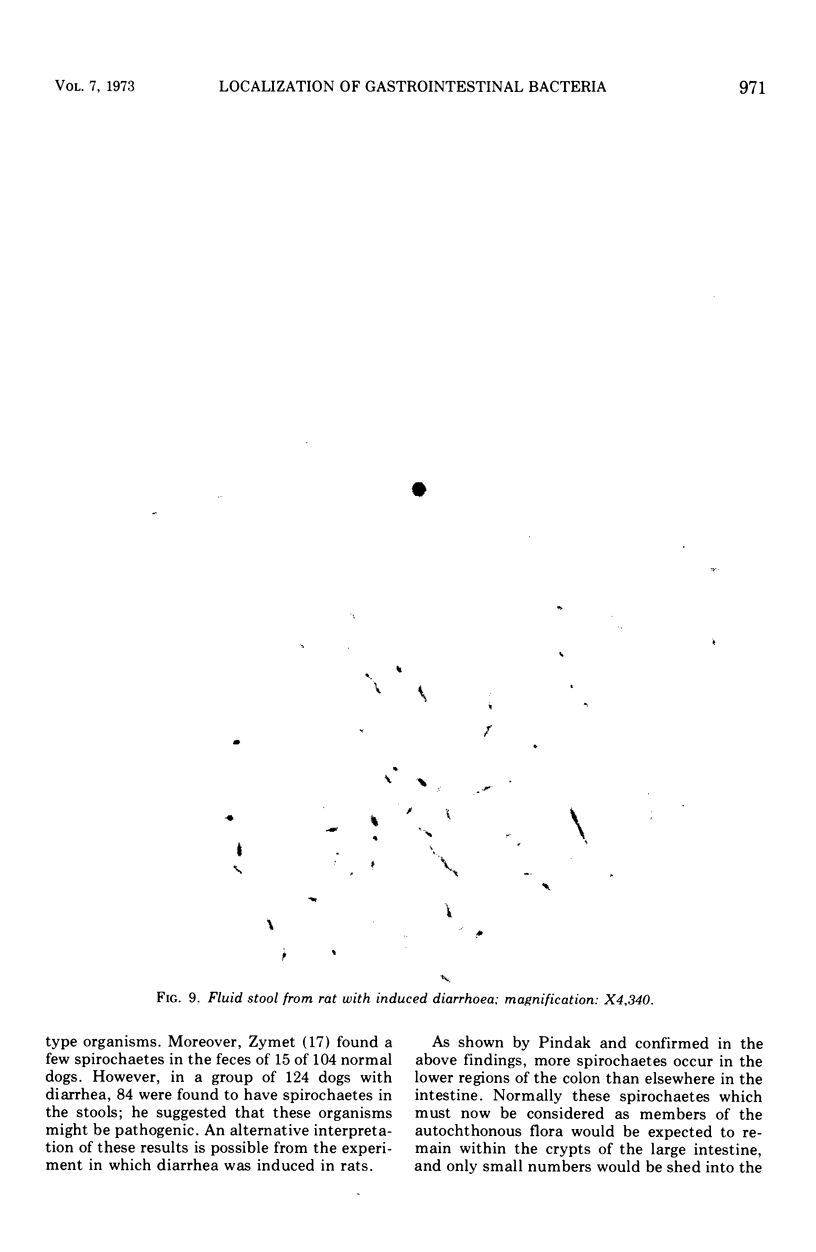

Images in this article
Selected References
These references are in PubMed. This may not be the complete list of references from this article.
- Davis C. P., Mulcahy D., Takeuchi A., Savage D. C. Location and description of spiral-shaped microorganisms in the normal rat cecum. Infect Immun. 1972 Aug;6(2):184–192. doi: 10.1128/iai.6.2.184-192.1972. [DOI] [PMC free article] [PubMed] [Google Scholar]
- Gordon J. H., Dubos R. The anaerobic bacterial flora of the mouse cecum. J Exp Med. 1970 Aug 1;132(2):251–260. doi: 10.1084/jem.132.2.251. [DOI] [PMC free article] [PubMed] [Google Scholar]
- Hentges D. J., Maier B. R. Inhibition of Shigella flexneri by the Normal Intestinal Flora III. Interactions with Bacteroides fragilis Strains in Vitro. Infect Immun. 1970 Oct;2(4):364–370. doi: 10.1128/iai.2.4.364-370.1970. [DOI] [PMC free article] [PubMed] [Google Scholar]
- Lee A., Gemmell E. Changes in the mouse intestinal microflora during weaning: role of volatile fatty acids. Infect Immun. 1972 Jan;5(1):1–7. doi: 10.1128/iai.5.1.1-7.1972. [DOI] [PMC free article] [PubMed] [Google Scholar]
- Lee A., Gordon J., Lee C. J., Dubos R. The mouse intestinal microflora with emphasis on the strict anaerobes. J Exp Med. 1971 Feb 1;133(2):339–352. doi: 10.1084/jem.133.2.339. [DOI] [PMC free article] [PubMed] [Google Scholar]
- Lee F. D., Kraszewski A., Gordon J., Howie J. G., McSeveney D., Harland W. A. Intestinal spirochaetosis. Gut. 1971 Feb;12(2):126–133. doi: 10.1136/gut.12.2.126. [DOI] [PMC free article] [PubMed] [Google Scholar]
- MEYNELL G. G. Antibacterial mechanisms of the mouse gut. II. The role of Eh and volatile fatty acids in the normal gut. Br J Exp Pathol. 1963 Apr;44:209–219. [PMC free article] [PubMed] [Google Scholar]
- Pindak F. F., Clapper W. E., Sherrod J. H. Incidence and distribution of spirochetes in the digestive tract of dogs. Am J Vet Res. 1965 Nov;26(115):1391–1402. [PubMed] [Google Scholar]
- REYNOLDS E. S. The use of lead citrate at high pH as an electron-opaque stain in electron microscopy. J Cell Biol. 1963 Apr;17:208–212. doi: 10.1083/jcb.17.1.208. [DOI] [PMC free article] [PubMed] [Google Scholar]
- Savage D. C., Dubos R. Alterations in the mouse cecum and its flora produced by antibacterial drugs. J Exp Med. 1968 Jul 1;128(1):97–110. doi: 10.1084/jem.128.1.97. [DOI] [PMC free article] [PubMed] [Google Scholar]
- Savage D. C., Dubos R., Schaedler R. W. The gastrointestinal epithelium and its autochthonous bacterial flora. J Exp Med. 1968 Jan 1;127(1):67–76. doi: 10.1084/jem.127.1.67. [DOI] [PMC free article] [PubMed] [Google Scholar]
- Zymet C. L. Canine spirochetosis and its association with diarrhea. Vet Med Small Anim Clin. 1969 Oct;64(10):883–887. [PubMed] [Google Scholar]



